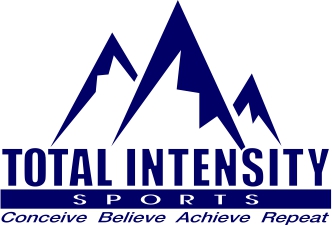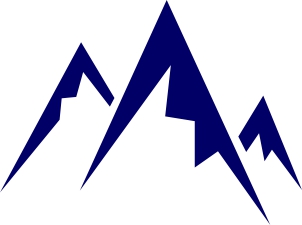
As Total Intensity Sports Ironman athlete Mark Holm was training for Ironman Arizona, he had a few bumps along the way – Mark had some injury issues, specifically his calf, during his ramp up in training. This severely limited his run miles – his longest run distance was only about 13 miles. On top of that, Mark spent the two weeks prior to the race recovering from an illness that really hindered his training and taper.
Mark had to put the injuries and illnesses of training behind him on race day and while he was confident about his swim and bike, the run was going to be the big question. Could his calf and body do a run longer than 13 miles? Well, after getting off the bike and ranking 100th in his age group, the splits on the run started out strong. The farther he ran, the more he moved up the rankings. His first half-marathon he held 10:15/mile and second half-marathon he only slipped to 11:15’s. Mark, after passing 40 other men in his age group, reached the finish with a 4:43 marathon, a personal best in an Ironman by 17 minutes! Mark’s finishing time was 12:28:38, also a personal best.
While Mark’s marathon really stood out, it was what he did leading up to the run that made the run, and his entire race, the real reason for success. On race day, and in training, it’s not necessarily an athlete’s training or run fitness that can determine great times on the run. What you do on the bike will hugely impact your run, and Mark experienced just that. Post race, I asked Mark a number of follow-up questions.
Coach John: As you ramped up to IM Arizona, you had more calf issues – what were they and what do you think the root cause was?
Mark: For a lack of a better term, I think it was scar tissue or knots in the muscle. If I allow them to build up over time, they become the weakest point in my calves, and ultimately become an injury.
Coach John: I know we had a ton of stretching and flexibility time on your training schedule, what were the different things you did to correct your calf problems? What did you notice make the biggest improvements?
Mark: I work out the bumps in the scar tissue with a lacrosse ball. When I’m sitting on the couch watching TV, I put my calf on top of the ball, on the coffee table. For additional pressure, I throw my other leg on top. Just moving back and forth over the sensitive spots, no more than a few inches, until the bump is smoothed out. It will hurt, and I will be sore the next day. But it keeps the injuries from coming back, and I have to be proactive by rolling regularly.
Coach John: How did your approach on the bike (endurance wise) evolve throughout your training?
Mark: Almost every Ironman and 70.3 I have done, my legs felt like they were cramping during the run. I was told that I went out too hard on the bike. For years I never believed this to be true. But race after race, I kept having the same symptoms. In 2018, I decided I didn’t want this to happen anymore. I stopped kidding myself and realized I had to make a change. After consulting with you, you recommended I pedaled at minimum target of 90 RPMs. So, during my big bricks, I put this to the test, and sure as shit; it worked!
Coach John: That’s awesome! Were you able to use this approach on race day?
Mark: Absolutely. My entire race was focused on this one thing; 90 RPMs. I watched this like a hawk. I was passed by everyone. IM Arizona has a lot of first-timers and it was evident as they sprinted by me. It was quite humorous. All I had to do was maintain this number. I cruised the bike with my best time ever, and when I dismounted, my legs felt fresh.
You saw my stats – I was 100th in my age group when I finished the bike. I was 40th after the run.
Coach John: The one question I always ask when you, or any of my athletes, get off the bike is “how are your legs??” What I really want to know is, “did you pace yourself enough on the bike to nail this run?”
It was awesome to watch you slowly reel in one after the other… especially in the final half marathon. How did your approach to your race day nutrition evolve throughout your training?
Mark: For years, I have been using solid foods for nutrition. I’ve tried so many different things like sandwiches, bars, cookies, etc. The problem with all these is they are bulky and difficult to carry it all. And I got tired of eating the same stuff over time.
I had always been curious how a liquid could satisfy my intake and not leave me hungry. So, I tried Herbal Life. Heather Jackson, Pro Ironman, is sponsored by Herbal Life. To my amazement, it tasted so good, I had to keep myself from over eating. I found it easy to carry and I never got tired of the taste. In fact, I love it.
Coach John: I know you used this on race day, did it work for you?
Mark: Hell yes! It only took up 3 water bottles to sustain 6 hours of riding.
Coach John: So, looking back on the season, what were the top lessons you learned while training for IM Arizona?
Mark: One, NOT going out too hard on the bike – maintain 90 RPMs on the bike so my legs will be fresh for the run. Two, weight training. Specifically, my legs and abs/core. I was very disciplined in 2018 and it made a noticeable difference all season long. Less fatigue; more endurance; much happier. Three, using liquid nutrition; Herbal Life. Amazing taste. Never get tired of it. Maintained energy. And finally, using the lacrosse ball on my calves and hips. “Flossing the fiberous tissue” to get rid of the knots.
Coach John: How do you see this changing your training approach in the future?
Mark: These 4 lessons changed my entire race strategy. Never have I felt so comfortable in a race. I was never out of breath or too fatigued. All I had to do was sit back and relax while maintaining my training pace. The race was over before I knew it. People told me to enjoy the race and just have fun. And I DID!
Coach John: That’s awesome, Mark. This was definitely a breakthrough year for you!
John Pottebaum is an Ironman Certified Coach, Four-time Ironman and triathlete for over 20 years. He has been coaching triathletes out of Sacramento, California since 2000 and welcomes any questions you might have. Contact John directly here.









